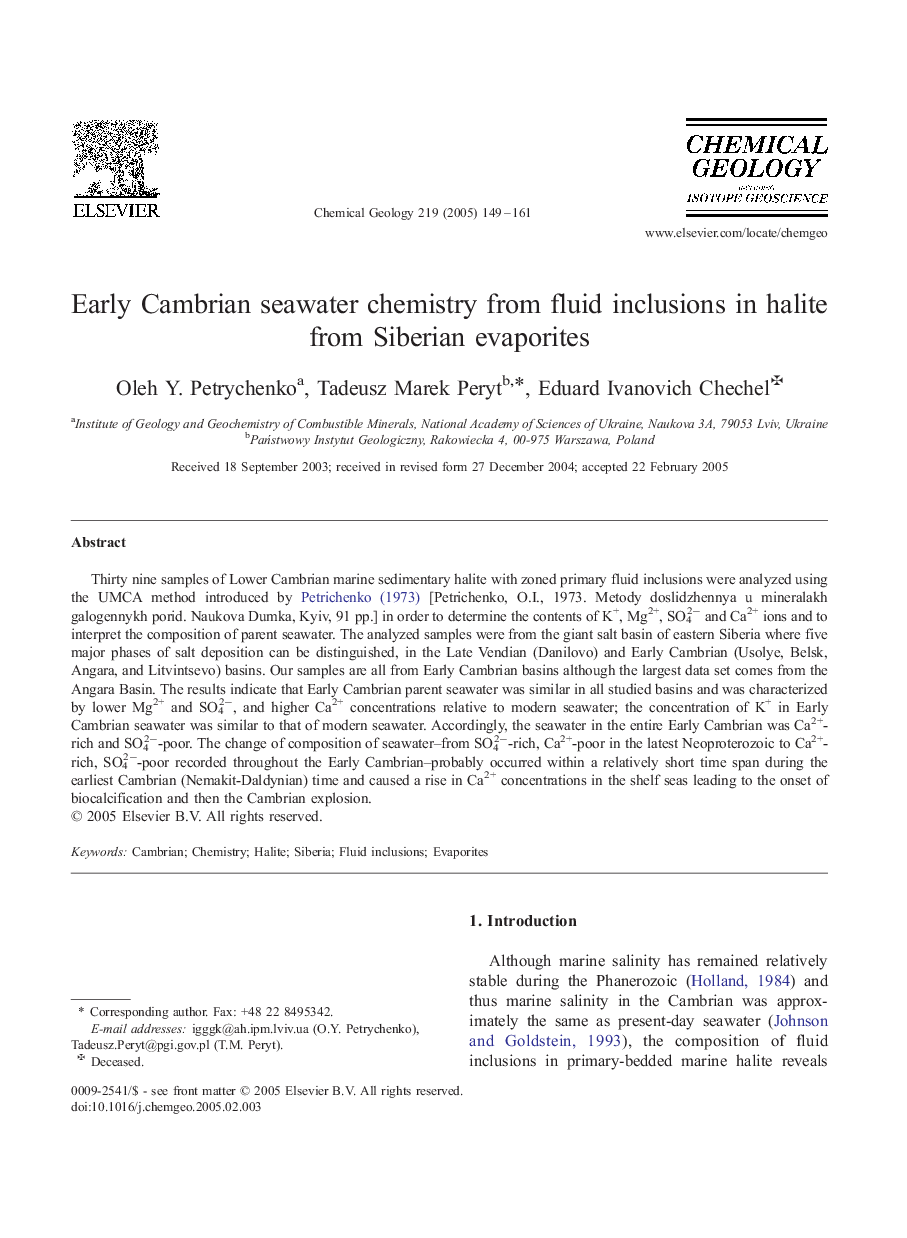| Article ID | Journal | Published Year | Pages | File Type |
|---|---|---|---|---|
| 9528985 | Chemical Geology | 2005 | 13 Pages |
Abstract
Thirty nine samples of Lower Cambrian marine sedimentary halite with zoned primary fluid inclusions were analyzed using the UMCA method introduced by Petrichenko (1973) [Petrichenko, O.I., 1973. Metody doslidzhennya u mineralakh galogennykh porid. Naukova Dumka, Kyiv, 91 pp.] in order to determine the contents of K+, Mg2+, SO42â and Ca2+ ions and to interpret the composition of parent seawater. The analyzed samples were from the giant salt basin of eastern Siberia where five major phases of salt deposition can be distinguished, in the Late Vendian (Danilovo) and Early Cambrian (Usolye, Belsk, Angara, and Litvintsevo) basins. Our samples are all from Early Cambrian basins although the largest data set comes from the Angara Basin. The results indicate that Early Cambrian parent seawater was similar in all studied basins and was characterized by lower Mg2+ and SO42â, and higher Ca2+ concentrations relative to modern seawater; the concentration of K+ in Early Cambrian seawater was similar to that of modern seawater. Accordingly, the seawater in the entire Early Cambrian was Ca2+-rich and SO42â-poor. The change of composition of seawater-from SO42â-rich, Ca2+-poor in the latest Neoproterozoic to Ca2+-rich, SO42â-poor recorded throughout the Early Cambrian-probably occurred within a relatively short time span during the earliest Cambrian (Nemakit-Daldynian) time and caused a rise in Ca2+ concentrations in the shelf seas leading to the onset of biocalcification and then the Cambrian explosion.
Related Topics
Physical Sciences and Engineering
Earth and Planetary Sciences
Geochemistry and Petrology
Authors
Oleh Y. Petrychenko, Tadeusz Marek Peryt, Eduard Ivanovich Chechel,
